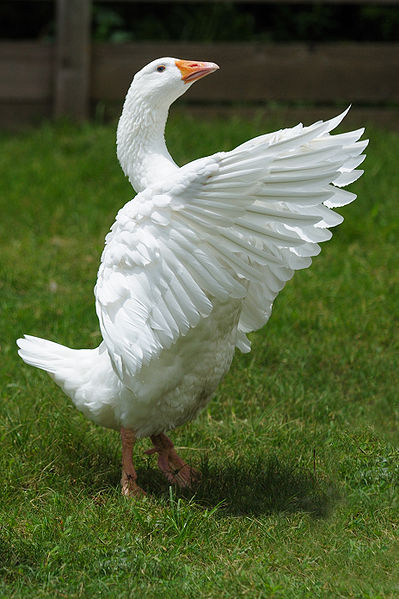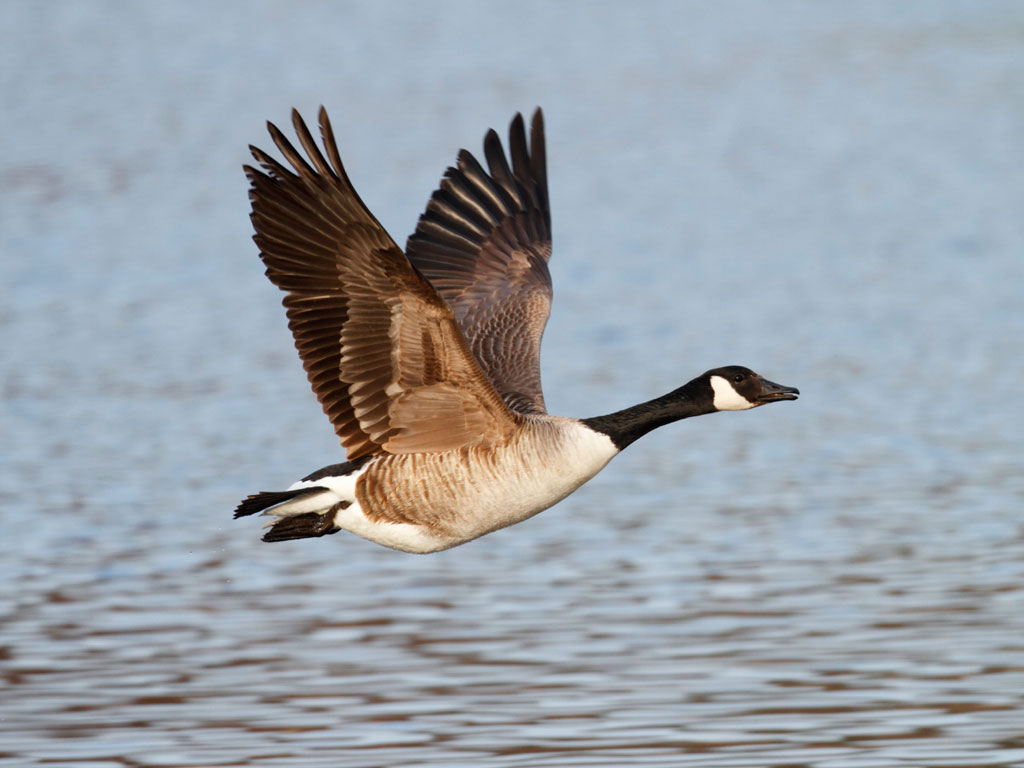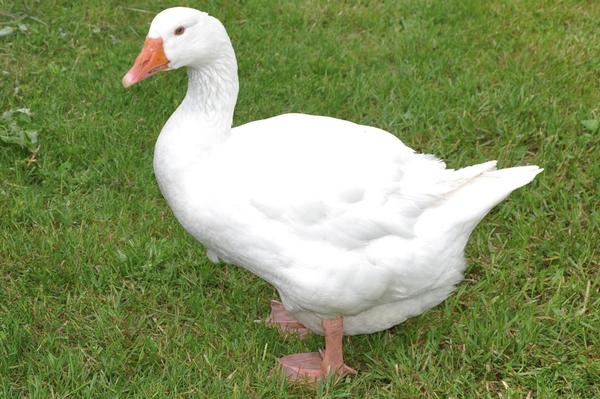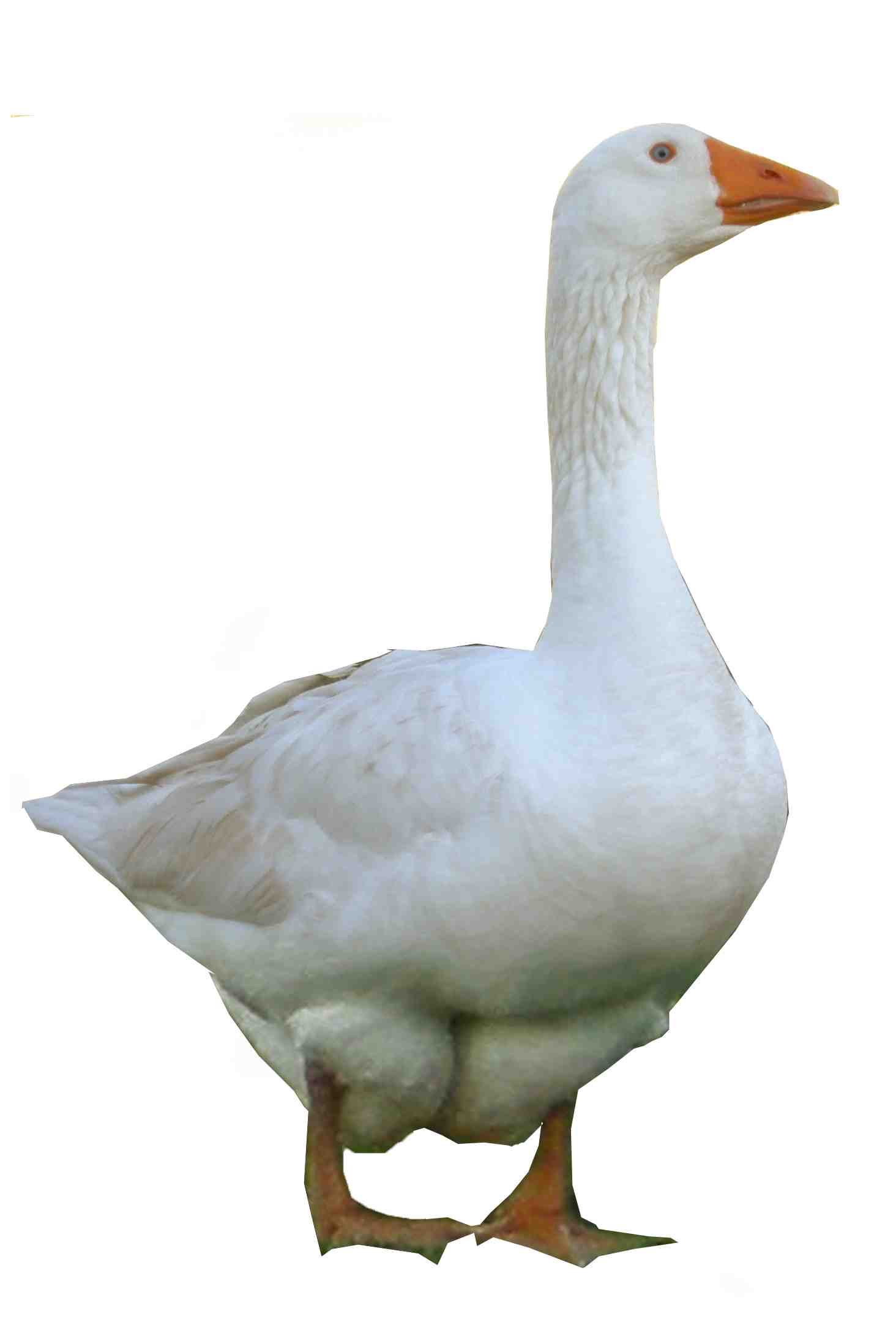
Relatively difficult to identify, geese are perhaps
best known for their migration, being
harbingers of both summer and winter. Geese live
comfortably at the intersection of water and land,
eating a vegetarian diet of grasses, seeds, roots,
berries, and aquatic plants. Unlike many birds,
geese pair-bond and mate for life, building a simple
nest in the ground and lining it with down. Depending
on their species, geese lay a clutch of four
to nine eggs, and fledglings remain grounded for
forty to seventy-three days. Geese molt once a
year after the breeding season; during this period
the bird is unable to fly for four to five weeks.
Physical Characteristics of Geese
Geese are medium- to large-sized birds, between
the size of ducks and swans. They have long necks
and short legs in the center of their bodies. Because
of this leg placement, geese do not waddle
as much as other waterfowl when moving about
on land. Their feet are webbed, which enables
them to swim rapidly.
The bills of geese have serrations on the mandibles
called lamellae; these are useful, because
most geese gather some of their food while submerged.
Because the bill is equipped with a horny
covering at the tip of the upper mandible and because
of the curved shape of the bill, geese can easily
clip grasses, grains, or other foods.
Most species of geese are blackish in color, although
many species have considerable white
markings in their plumage, often restricted to
their bellies or lower tail coverts. Even though
each species has distinguishing physical characteristics,
it is often difficult to identify a particular
species in the field. Even Canada geese, which are
probably the easiest to identify with their white
chin straps, can be a source of frustration for bird
watchers attempting to distinguish between the
dozen or so subspecies of Canada geese. Male and
female geese of each species resemble each other.
Goose Migration
Many species of birds migrate, but geese, because
they are so visible, epitomize this phenomenon to
most people. Geese migrate for survival: Their
northern breeding grounds become inhospitable
when water areas freeze over, making food unattainable,
and their southern grounds cannot sustain
large populations of birds year around. In the
United States, geese migrate northward fromFebruary
to March and southward fromSeptember to
November.
Geese, likemanybirds, often return to the same
summer and winter areas year after year. Clearly,
geese make use of visual landmarks when migrating;
even at night some landmarks, such as large
bodies of water, can be seen from the air. Young
geese learn about these landmarks, as well as
about traditional migratory stopping places, from
their elders. Landscape alone, however, is not all
that helps geese navigate. The position of the sun
and stars can help them, as can the wind and the
earth's magnetic field.
Most species of geese fly in some sort of Vformation.
Flocks of snow geese, for example,
form U's, checkmarks, or irregular masses. Only
Canada geese fly in an almost perfect V. These
formations have less to do with aesthetics than
aerodynamics. Just as bicycle racers will draft lead
bikers by riding slightly behind and to the side of
them, so a goose will draft the lead bird, the one
doing most of the work by breaking the wind's
resistance for the birds that follow. Lead birds
change during a flight. Geese normally fly at about
forty miles per hour, a speed that can change if the
bird is in a hurry or being chased.
By plotting the origins and destinations of
banded birds, biologists have discovered four
main flyways used by geese in the United States:
the Atlantic Flyway, the Mississippi Flyway, the
Central Flyway and the Pacific Flyway. Banding
geese in order to study them is more than an academic
exercise. Knowing migration paths has allowed
experts to make decisions on hunting quotas
and on the location of wildlife refuges.
Goose Facts
Classification:
Kingdom: Animalia
Subkingdom: Bilateria
Phylum: Chordata
Class: Aves
Order: Anseriformes
Family: Anatidae
Subfamily: Anserinae
Tribe: Anserini (swans and geese, four genera,
thirty-six species)
Geographical location: Primarily the Northern
Hemisphere
Habitat: Land (fields, prairies, tundra, forests)
and water (ponds, lakes, rivers, streams, inlets,
tidal areas, oceans)
Gestational period: From three to four weeks
Life span: Most geese live about twenty years;
can (rarely) reach fifty-five years
Special anatomy:Webbed feet, long necks, large
bills
Other popular Animals
Photo Gallery of - Goose








 Animalia Life
Animalia Life